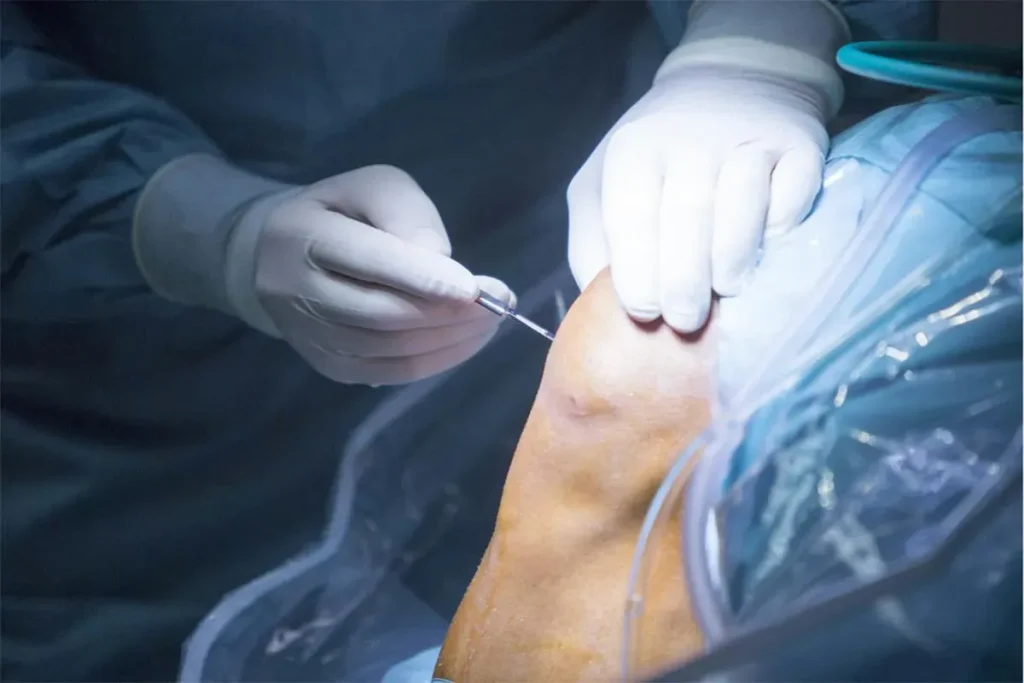What Are the Common Types of Orthopedic Surgery?

When orthopedic surgery is your best option, finding peace of mind might be challenging. However, the methods used in Orthopedic Surgery have never been more sophisticated. After surgery, you have a great chance of living a fuller, perhaps pain-free life.
Although orthopedic surgeons execute hundreds of various kinds of operations, some are more frequently performed than others. More people than ever before are recovering from many procedures more quickly and with better results.
1. What Are the Common Types of Orthopedic Surgery
Joint Replacement
Arthrodesis, another name for joint fusion, is a surgery used to fuse two bones together in a joint. By removing the cartilage and stabilizing the bone so that it heals together, surgery is typically performed to straighten the injured joint.
A surgical process known as joint replacement involves replacing a worn-out or injured joint, such as the hip, knee, or shoulder, with an artificial prosthesis. It is frequently done to ease pain and restore function in injured or arthritic joints.
Spinal surgery
An essential bone structure that supports your body and facilitates walking, twisting, and movement is your spine. The vertebrae (bones), disks, joints, soft tissues, nerves, and spinal cord comprise your spine. By strengthening the core muscles that support your spine, you can avoid back pain and injuries.
Laminectomy (removal of a portion of the vertebra to ease strain on nerves), spinal fusion (connecting two or more vertebrae), and discectomy (removal of a damaged disc) are common operations. The goals of these procedures are to reduce discomfort, increase range of motion, and stop additional harm.
fracture repair
A surgical treatment called fracture repair is used to straighten and stabilize fractured bones. In order to maintain correct alignment and function while the bones heal, metal plates, screws, rods, or pins are usually used.
Osteotomy
Osteotomy is a surgical technique used to treat problems like arthritis or misaligned joints. It entails cutting and reshaping bones to repair abnormalities or relieve pressure on joints. It lessens discomfort and enhances function.

2. How do orthopaedic surgeons fix bones?
An orthopedic surgeon creates an incision at the end of a long bone and inserts a rod along the inside of the bone to stabilize and mend a fracture. After that, the shattered bone is moved. To secure the bone, your surgeon might use metal rods, plates, screws, or pins. These could be either short-term or long-term.
Sometimes they straighten the bones (a process called reduction) by hand or surgery before stabilizing them to promote proper healing.
Read also : What are the different types of knee replacement surgery?
3. How long does it take to recover from Orthopedic surgery?
The reason for your surgery determines when it will take place. There may be minimal to no waiting period if you have a major break or fracture, which may require rapid surgery. Your surgeon might plan your procedure a few days, weeks, or months in advance if you decide on an elective, non-emergency procedure. During your appointment, discuss with your surgeon when you may schedule your surgery and its timetable.
4. Coverage for Orthopedic Surgery Under Medical Insurance
Once confined to the elderly, orthopedic disorders are now frequently seen in people of all ages. The young person is being diagnosed with them because of their sedentary lifestyle, which puts their joints at risk. Since the beginning of the COVID-19 pandemic, this issue has gotten worse, making youths’ lifestyles even worse. There is a growing risk, particularly to the working class, as more and more companies embrace the work-from-home mentality.
Conclusion
To sum up, orthopedic surgery includes a range of operations meant to address musculoskeletal problems. Osteotomy, arthroscopy, spinal surgery, fracture repair, tendon and ligament repair, and joint replacement are common types. From bone fractures and deformities to spinal diseases and joint degeneration, each type treats particular conditions. With improved techniques guaranteeing greater results and quicker recovery times, these surgeries are intended to reduce pain, restore function, and enhance patients’ quality of life. The patient’s condition, general health, and the extent of the musculoskeletal issue all influence the surgical option.
FAQs
1. Which is the more painful surgery, knee or hip?
Both hip and knee replacement procedures can cause pain, but because of the complexity of the joint and the requirement for more thorough rehabilitation, knee replacement is typically thought to cause more post-operative discomfort and a longer recovery period. Individual pain thresholds, however, differ according to the operation and the subject.
2. What is osteotomy?
Osteotomy is a surgical technique used to treat problems like arthritis or misalignment. It entails cutting and reshaping bones to rectify deformities, align joints, or relieve pressure on damaged areas.
3. What is fracture repair surgery?
In order to ensure correct alignment and function, fracture repair surgery entails realigning and stabilizing damaged bones. Frequently, metal plates, screws, rods, or pins are used to hold the bones in place while they heal.



